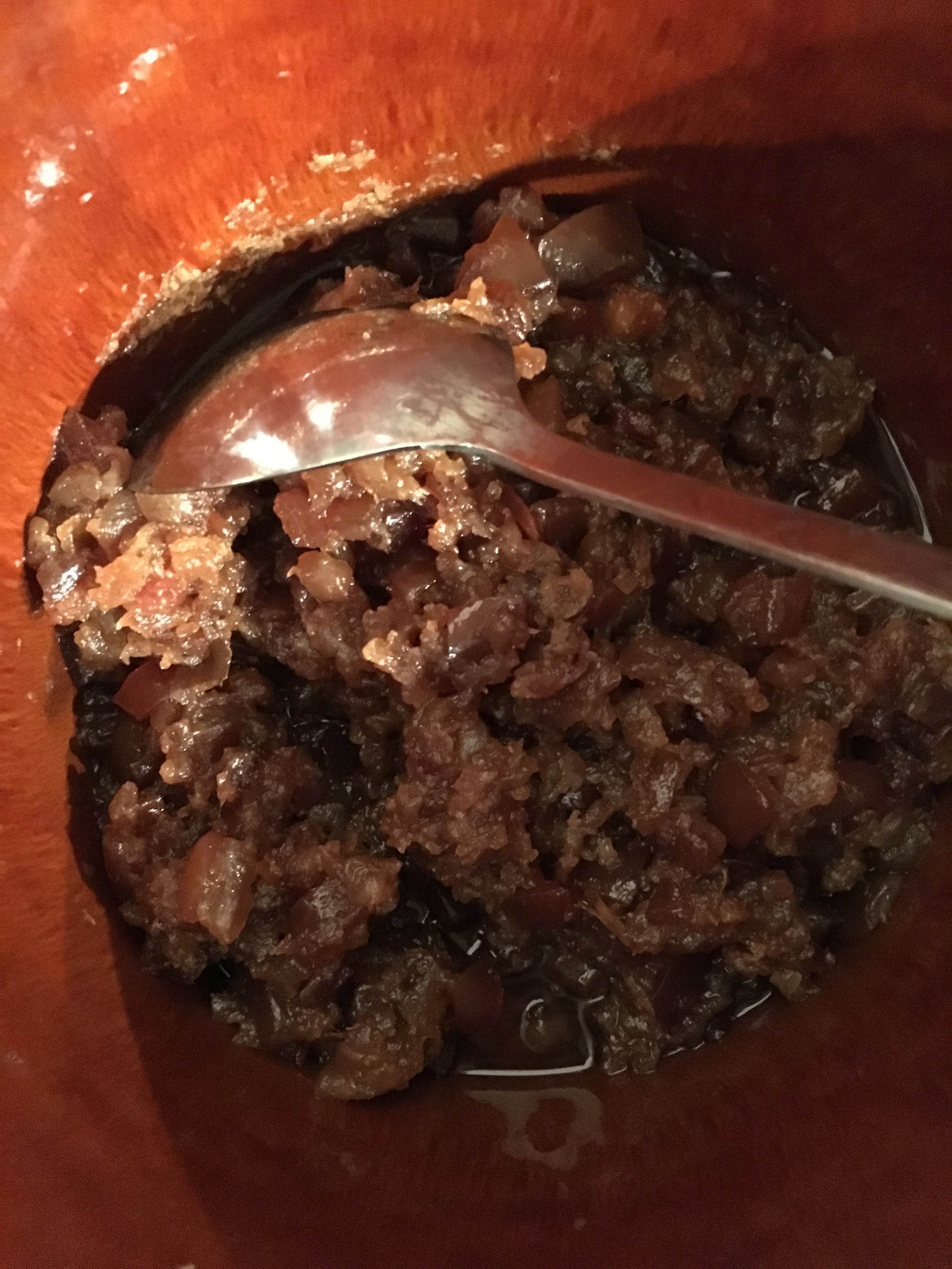Render Your Own Lard
While the idea of whole animal eating sounds really nice, the reality can occasionally be a bit gruesome. If you've been reading my blog for a while now you can imagine I was very excited when we learned that our friends' farm was going to be offering sides of pork since I am passionate about supporting local growers. If they are our friends it is the icing on the cake!
I love that all the money I spent on this meat is going directly to support my friends and their farm. I know them, and that they are people of quality, and that they really care for their animals. I know they source extra treats for them like the surplus milk and cream from the local dairy, and the slightly old produce the local grocery store would have wasted. I've seen their farm and probably saw this very pig.
As I was planning my order with the butcher I mentioned that I would really like to have as much of the trim as possible - things like soup bones, and all the extra fat. In fact, when my friend dropped off my order she asked if I would want to take the head! My frugal self and my squeamish self had a little battle, but in the end I took it. That's a lot of meat to waste! Currently it is waiting for me in my freezer to become an attempt at head cheese. Regardless of how that adventure goes, I knew for sure I was going to try to render some lard.
I started out by rendering in a large pot on the stove, but the cubes I painstakingly cut (note to self - get fat ground next time if possible!) started to stick to the bottom, and I ended up transferring it all to a crockpot on low. The other thing I didn't realize is that if you don't slowly ladle off the fat as you go it takes forever to render. Once I realized that things moved along much more quickly, and "cracklins" - the leftover bits of skin and tissue that have slowly deep fried through the process - started to form. I saved my cracklins to mix into a batch of baked beans.
It is important that you don't ladle your fat directly into glass storage containers, since it will be too hot and your glass will shatter. I strained mine into a plastic bowl first and then poured it into mason jars. Working in batches like this also helped since I would know if I had burned it before mixing it in with the rest of the finished lard. Thankfully it didn't happen, but it gave me peace of mind to know that if I ruined some I wouldn't necessarily ruin it all!
When the lard is liquid it is a light golden colour, but as it hardens it turns white. To get really beautiful, pure white lard you want to render only the leaf lard which is the fat surrounding the kidneys. Since I knew the butcher was really busy I didn't bother to specify that I wanted it separated. I also didn't think I needed to be super particular about my first attempt in case it was a complete flop!
After the lard had cooled a bit more I put it in the fridge and it hardened up nicely into this nice creamy colour. It doesn't smell particularly pork like, but it isn't completely odourless. This is probably since I didn't discriminate about the types of fat I used. I may not use this in a pie crust in case the piggy taste remained, but I definitely would give it a try with biscuits or something else more savoury.
Have any of you tried rendering fats? It was certainly time consuming, but I feel like it was worth it! I am also pleased to know this technique won't be lost because most of my generation isn't interested in learning traditional cooking! Writing this post was my way of passing it along. If any of you try it let me know how it went!



